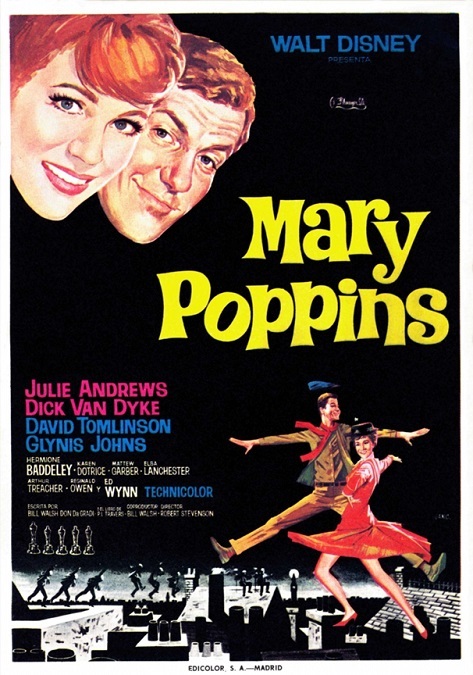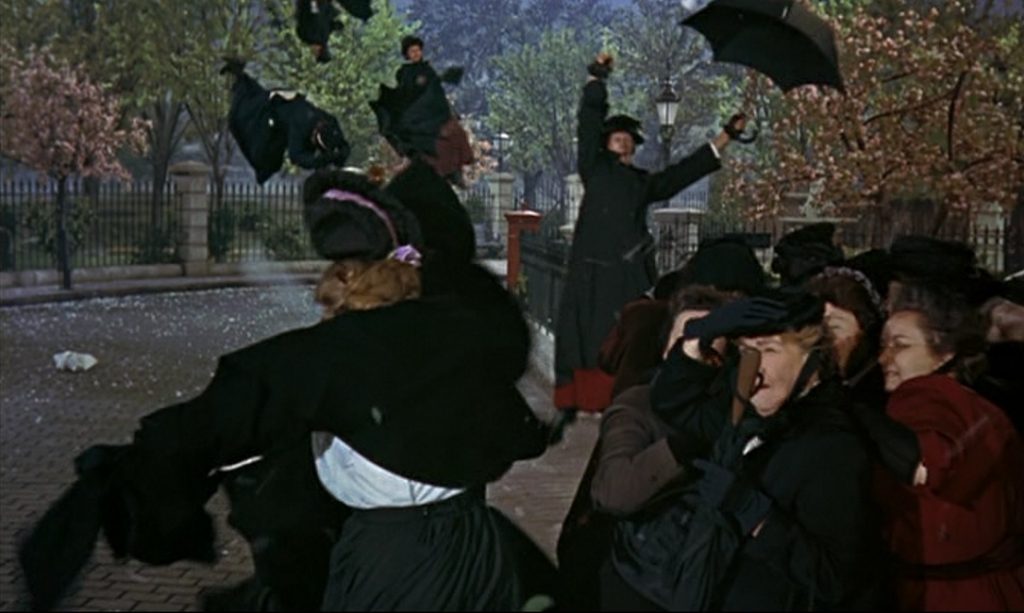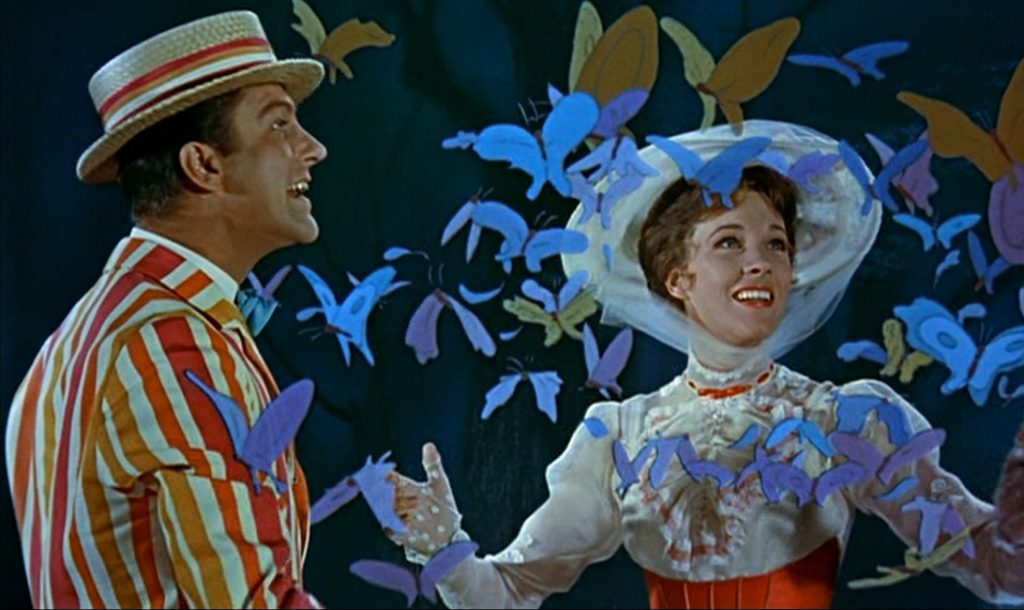



Mary Poppins – 1964 (WINNER)

As silly and as fanciful as the plot of this movie might be, there is no doubt that the special effects are something spectacular. Nearly every shot in the film contains some kind of special effect, whether it was obvious like hand-drawn animation or animatronics, or more subtle like the fantastic matte-paintings that made up most of the backgrounds that appear on the screen. And like the title character herself, the visual effects were practically perfect in every way… almost.
For me, the most notable effects were the use of invisible wires to make people float off the ground, and the combination of cartoon animation with live actors. The former, was used prolifically, sprinkled throughout the entire film. People seemed to float and fly as a matter of course. And I never saw a single wire on the screen, not even in the sequence where all the poor prospective nannys were blown away by the mysterious powers of Mary Poppins. And then, of course, there was the tea party on the ceiling which held five actors and a fully set table suspended in the air.
As for the latter, the use of the sodium vapor matte process was key, especially for the “Jolly Holiday” sequence, in which the actors wander through a cartoon fantasy world. According to my research, they used special sodium vapor lights to illuminate a pure white screen which was behind the actors. Because of the light’s unique color, it would not register on the red, green, or blue layers of the color film in which the movie was shot. Something called a beam-splitter was used to record a duplicate image on black and white film, which was extremely sensitive to the sodium vapor light. The result was a matte which allowed the actors to wear any color costumes they liked, something which would not have been possible using the traditional blue and green-screen technologies.
But it is important to note that though this process was beautifully used in the iconic “Jolly Holiday” sequence, it was also used throughout the rest of the film to provide the more realistic backdrops of the city of London, both on the ground level, and in the sequences which required a rooftop perspective. It was really an impressive feat since the movie was filmed entirely on Disney sound stages. These realistic mattes are not as noticeable, but they were not supposed to be. And as always, the invisible effects are the most effective, and thus impressive ones of all.
I also liked the brief but fun sequence in which a gathering of dancing chimney sweeps are fired upon by a barrage of hand-drawn fireworks in comic fashion. It was a delightful way to end the dark twilight sequence with some bright and eye-catching color. But that isn’t to say that the effects were flawless. Though the sodium vapor process was pretty remarkable, they still hadn’t gotten the lighting right. There are still a number of shots in which the actors seemed to be lit from behind or from the side, where no light source seemed to exist. But these were minor flaws. All in all, the effects were pretty top notch. Well… except for the really bad animatronic birds. They just moved and looked so fake. Oh well.